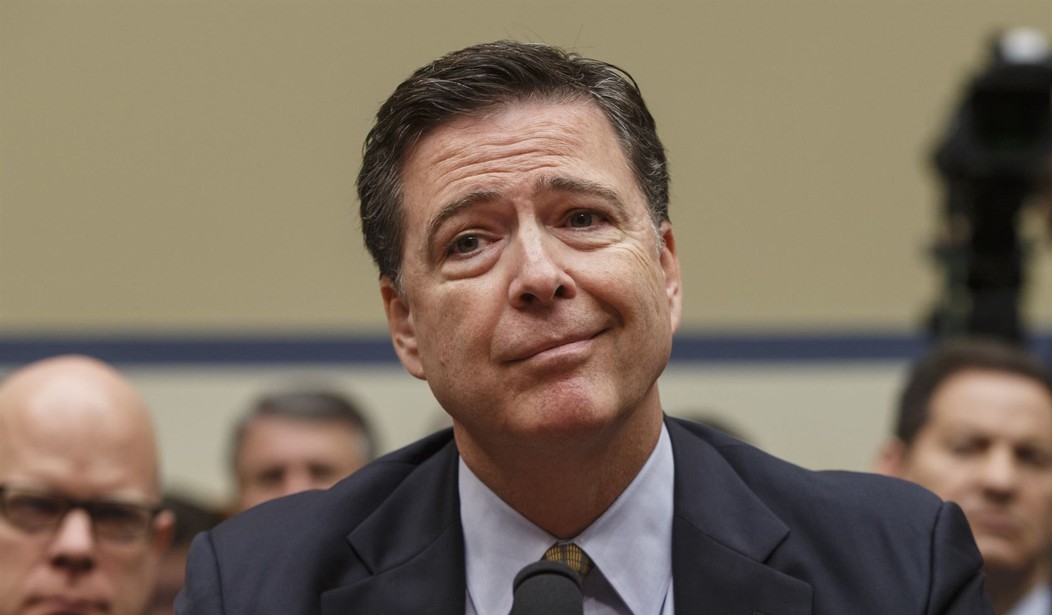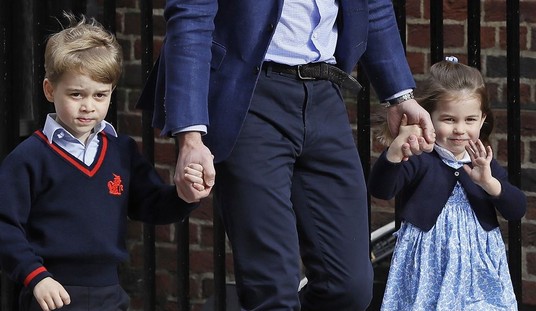Earlier today, my colleague Tyler O’Neil reported on the letter DNI John Ratcliffe sent to Sen. Lindsey Graham regarding the Clinton email scandal and the emergence of Russiagate. Here is the relevant timeline text from that letter:
-
“In late July 2016, U.S. intelligence agencies obtained insight into Russian intelligence analysis alleging that U.S. Presidential candidate Hillary Clinton had approved a campaign plan to stir up a scandal against U.S. Presidential candidate Donald Trump by tying him to Putin and the Russians’ hacking of the Democratic National Committee. The IC does not know the accuracy of this allegation or the extent to which the Russian intelligence analysis may reflect exaggeration or fabrication.”
-
“According to his handwritten notes, former Central Intelligence Agency Director Brennan subsequently briefed President Obama and other senior national security officials on the intelligence, including the ‘alleged approval by Hillary Clinton on July 26, 2016 of a proposal from one of her foreign policy advisors to vilify Donald Trump by stirring up a scandal claiming interference by Russian security services.’”
-
“On 07 September 2016, U.S. intelligence officials forwarded an investigative referral to FBI Director James Comey and Deputy Assistant Director of Counterintelligence Peter Strzok regarding ‘U.S. Presidential candidate Hillary Clinton’s approval of a plan concerning U.S. Presidential candidate Donald Trump and Russian hackers hampering U.S. elections as a means of distracting the public from her use of a private mail server.’”
Before I proceed further, it’s important to note that Ratcliffe’s release of the letter has received pushback. Politico has that story, claiming the pushback is bipartisan and the claims in the letter have been dismissed by Republicans and Democrats. But the only on-the-record quotes in the piece challenging Ratcliffe’s letter are from Democrat Sen. Mark Warner, a former spokesman for John Brennan, and a Clinton spokesman. They’re hardly dispassionate. Here is how Politico characterizes the other pushback:
And several former senior intelligence officials described Ratcliffe’s move as incendiary and irresponsible, given the manner in which he was publicly releasing unverified information that originated from a foreign adversary.
Who are they? We need to know who they are and what their alignments and motives are. Politico is no help on this point.
Now, back to the letter’s sensational claims. If they’re true, they’re huge.
There’s a curious turn in the two scandals’ timelines. By the time Clinton allegedly triggered the Russia case to distract from her email scandal, she had already been publicly cleared in the email server case. It would seem that she did not really need the distraction.
FBI Director James Comey “cleared” Clinton in his infamous “no reasonable prosecutor” statement on July 5, 2016. Comey’s statements, one day after the July 4 holiday, giving Clinton the clear, was seen at the time as highly unusual. The typical investigation is handled at the FBI and then referred to prosecutors who make the call whether to press forward with a case against the accused or not. Comey short-circuited that, putting the FBI in the role of dismissing the case. Why he did that has never been adequately explained. His action certainly gave cover for others higher up in the administration, and of course the pliant media, to dismiss it.
U.S. Attorney General Loretta Lynch summarily dismissed the case the following day, July 6 — an awfully quick decision. It was as if she knew what Comey would do ahead of time and was ready to close ranks. Lynch had had her infamous meeting on the tarmac with Hillary Clinton’s husband, former President Bill Clinton, on June 27, 2016. The true contents of their discussion have never been disclosed. Many have assumed it was related to the email server scandal.
Republicans did not let the email server case go. They questioned Comey on July 7, and sought another route to have the case looked at for prosecution, according to this USA Today timeline:
July 11, 2016: Republican lawmakers sent a letter to the U.S. Attorney for the District of Columbia asking for an investigation into whether or not Clinton had lied to Congress when she testified to Congress about the email server.
Keep your eye on the date Clinton allegedly greenlit the Russiagate hoax: July 26, 2016. Why would she do that when the head of the FBI and the attorney general had cleared her weeks earlier? There was little risk that the U.S. Attorney for D.C. would take it up, given Lynch’s quick dismissal a day after Comey’s unusual dismissal.
But the case failed to go away.
This CNN timeline may give us an answer as to why Clinton would have had a motive to trigger the hoax, which Ratcliffe’s letter states was to distract from her email server scandal.
July 7, 2016 — Comey testifies before the House Oversight and Government Reform Committee. During the hearing, Comey says, “The Petraeus case, to my mind, illustrates perfectly the kind of cases the Department of Justice is willing to prosecute.”
The same day, the State Department reopens its investigation into Clinton’s use of a private email server.
Emphasis added.
Comey had publicly cleared Clinton on July 5, and Lynch dismissed the case on the 6th, but most have forgotten that the State Department reopened its investigation as Republicans continued to ask questions on the 7th. So it was still a live threat, despite Comey’s and Lynch’s dismissal.
The presidential campaign was heating up and the Clinton campaign had hired Fusion GPS months earlier to dig into Trump. It had produced the Steele dossier, a pack of nonsense no reasonable investigator would have used as a basis for an investigation. But we know Comey’s FBI did use it to fraudulently obtain FISA warrants to surveil the rival campaign challenging Clinton’s path to the presidency.
There is no evidence yet that the FBI similarly followed up on the July 26 trigger directly from Clinton, according to Ratcliffe’s letter, to start up the Russia hoax. Why? That’s the question Sen. Graham wants answered. Why did the FBI pursue one but not the other?
The FBI launched Crossfire Hurricane — the Russiagate investigation — on July 31, 2016. That’s just five days after Hillary Clinton allegedly greenlit the scandal from her campaign. In the following days, lovers Peter Strzok and Lisa Page, both FBI investigators, traded texts pledging essentially that they would use their positions in the Bureau to save the country from Trump.
If the Ratcliffe letter is accurate, everyone atop the Obama administration, including Comey, knew or at least had reason to suspect where Russiagate started on Sept. 7, 2016, the day the letter says they received the referral about it.
The day after that referral — the very next day — this happens:
Sept. 8, 2016: Comey, DHS Secretary Jeh Johnson, and President Obama’s Homeland Security Advisor Lisa Monaco brief Members of Congress about the Russian Government’s attempts to interfere in the 2016 election. The briefers assured Members that the Administration had the matter under control and asked for Congress’s help in reinforcing public confidence in the election.
Sure, they “had the matter under control.” They had received the referral and Comey had put Peter “insurance policy” Strzok, who became an infamously anti-Trump figure in Russiagate, on the job.
Editor’s Note: Want to support PJ Media so we can continue telling the truth about the 2020 election? Join PJ Media VIP TODAY and use the promo code LAWANDORDER to get 25% off your VIP membership.
Pelosi: Trump Negotiating Peace Between Israel and Arab Countries Is a ‘Distraction’









Join the conversation as a VIP Member